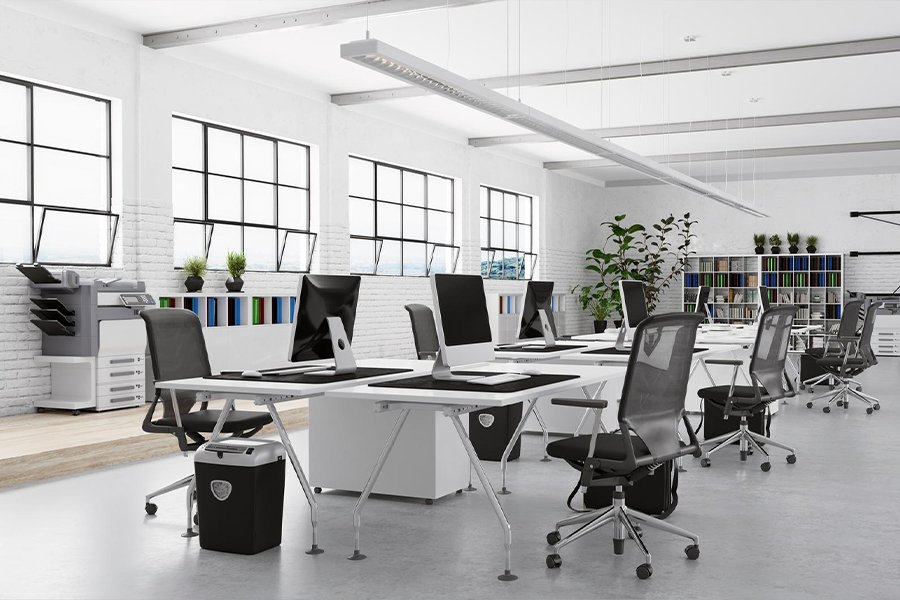
The New Benchmark for Office Design in Delhi
Delhi’s offices are changing faster than anyone expected. A few years ago, workplace design in the capital revolved around function and furniture. Companies focused on desk counts, meeting room sizes, and storage requirements. Today the conversation has shifted entirely. Leaders now see their office as a strategic tool that influences culture, productivity, teamwork, brand trust, and even talent retention. This shift has increased the demand for thoughtful and technically strong interior designers for office spaces in Delhi who understand the deeper psychology behind how people work.
The reason for this shift is simple. Delhi’s workforce has evolved. Teams expect clarity and comfort at work. Leaders expect efficiency and focus. Clients expect professionalism the moment they step into the reception. The office is no longer a backdrop. It is an experience. And companies want that experience to reflect who they are.
This is why the modern office interior in Delhi is designed with far more intention. Instead of concentrating on visual drama, decision makers want spaces that feel organised, structured, calming, and deeply precise. A well planned office instantly changes the way people behave. A clutter free layout creates smoother communication. Better zoning leads to fewer interruptions. Balanced lighting improves clarity and attention. These micro shifts have a major impact on how teams perform every day.
One of the reasons Delhi companies are investing more seriously in interior design is the city’s fast paced corporate environment. Workflows move quickly. Projects overlap. Deadlines collide. In such an environment, the office cannot be chaotic. It needs to support focus and accelerate decision making. This is where the best office interior designers in Delhi stand out. They treat the workplace like a strategic environment instead of a collection of decorated rooms. They understand that an office should reduce stress, not add to it.
Another major shift is the growing awareness about acoustics, ergonomics, and spatial psychology. Open offices used to be the default layout in the capital. Many companies are now realising that open offices without acoustic logic create constant interruptions. Teams struggle to concentrate. Meetings spill into circulation zones. Background noise becomes part of the workday. The top interior designers in the city now give equal importance to sound behaviour, material softness, and controlled lighting. These decisions shape the emotional tone of the workplace.
Delhi’s design narrative has also become more mature. Leaders no longer want visually loud offices. They prefer clear lines, warm palettes, honest materials, and layouts that feel premium without feeling excessive. The idea is not to impress the moment someone walks in. The idea is to feel good throughout the working day. The designers who succeed in Delhi are those who understand this sensitivity. They create offices that feel strong and subtle at the same time.
This shift in mindset is one of the reasons companies have moved toward integrated design build studios. Many organisations in Delhi have experienced the challenges of separating design and execution. Drawings get misinterpreted. Timelines get stretched. Finishes do not match the concept. Leadership teams today want clarity. They prefer one partner who owns the design, engineering, planning, procurement, and on site execution from start to finish. This ensures accountability at every stage.
AIA India has naturally fit into this demand. Known for its reasoning driven design and controlled execution, AIA has become a preferred partner for organisations that want structure and reliability in their office build journey. Their approach focuses on understanding how a company works before deciding how the space should work. They study workflow, privacy needs, movement patterns, team sizes, acoustic behaviour, and brand identity to shape spaces that feel tailored rather than templated. Their projects reflect a quiet confidence that resonates well with Delhi’s maturing corporate taste.
Technology has also changed how companies in the capital view design. Leadership teams want complete visual clarity before construction begins. Virtual walkthroughs and detailed renderings have become essential tools in the decision making process. They allow organisations to explore the office in advance and understand how it will feel at different times of day. Studios like AIA integrate this digital clarity into their process. This creates alignment among stakeholders and significantly reduces revision cycles during execution.
Delhi is also witnessing a growing emphasis on long term value. Companies want materials that age well, layouts that remain flexible for future expansions, and infrastructure that can support evolving technology. Sustainability plays a role here but not in a performative sense. Leaders want workspaces that reduce operational cost, lower maintenance, and improve energy efficiency. Designers who understand this balance between practicality and aesthetics are the ones shaping the city’s most intelligent offices.
Choosing the right partner for office design in Delhi is now a strategic business decision rather than a decorative one. The right designer can improve team clarity, reduce friction, accelerate work, and strengthen culture. The wrong one can create long term issues that limit growth. This is why organisations across the capital have become far more selective. They want designers who bring depth, discipline, and maturity to the project.
AIA India continues to play a meaningful role in this transformation because their philosophy aligns with Delhi’s new mindset. They place equal importance on creativity and engineering. Their designs feel modern and warm. Their execution feels controlled and predictable. And their understanding of workplace behaviour helps companies create environments that support long term performance rather than short lived visual impact.
Delhi’s offices are entering a new era where clarity matters more than colour and intention matters more than decoration. The companies that recognise the strategic power of their workspace will have a clear advantage in attracting talent, impressing clients, and building strong internal culture. And the designers who understand the city’s evolving expectations will be the ones shaping its next generation of high performance offices.

